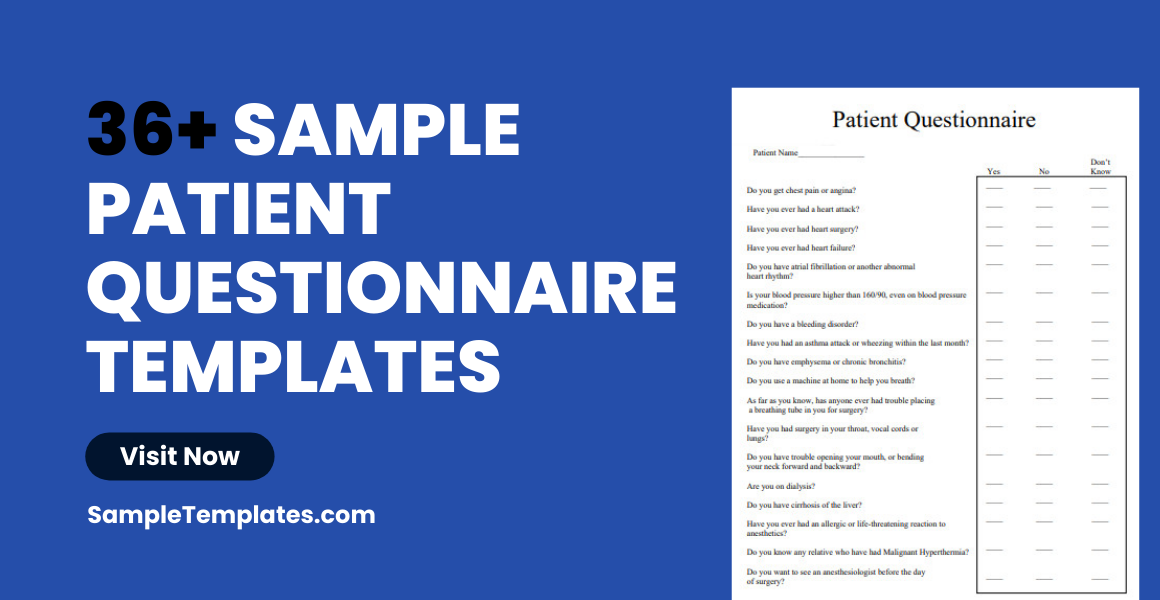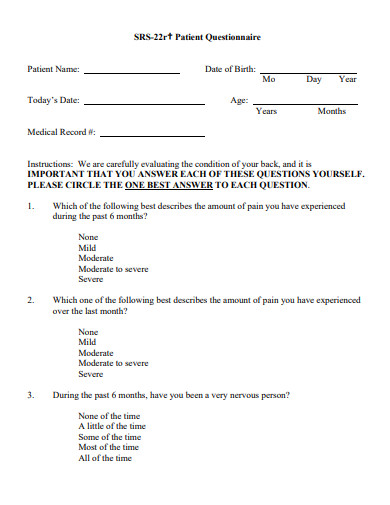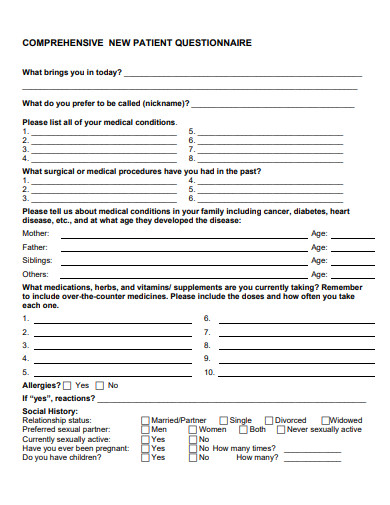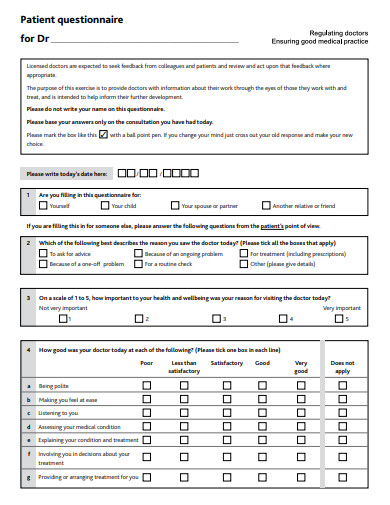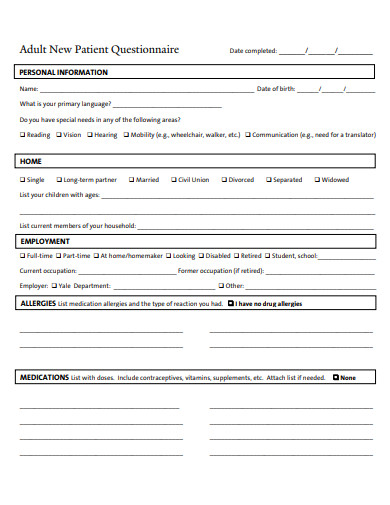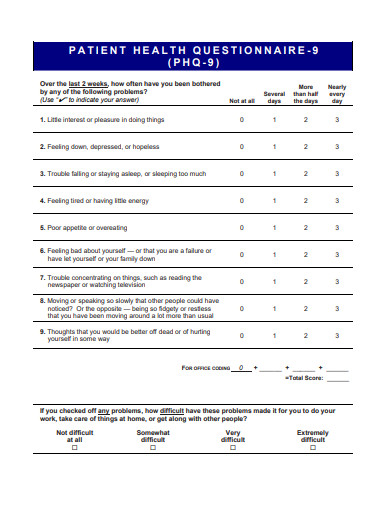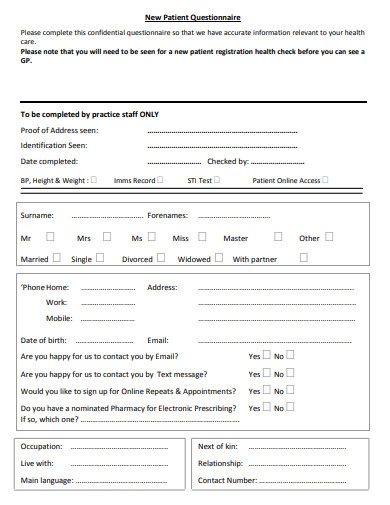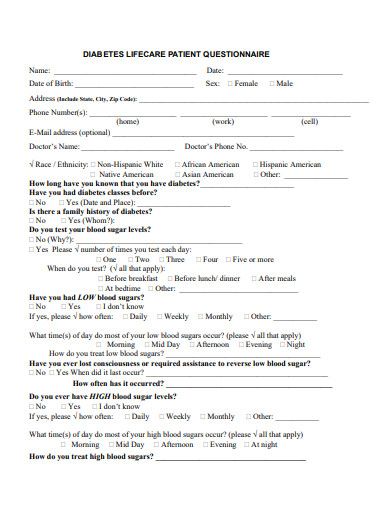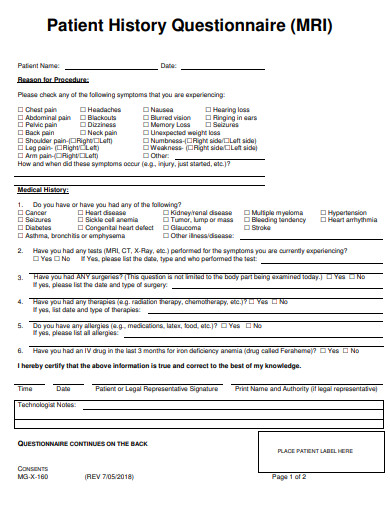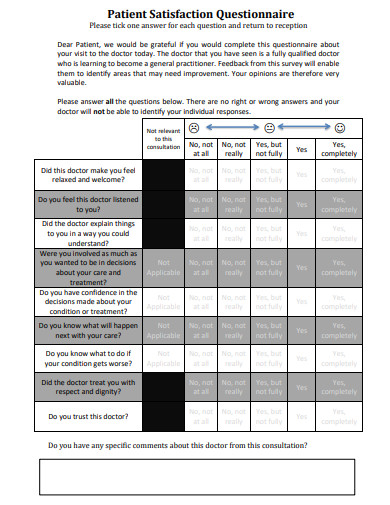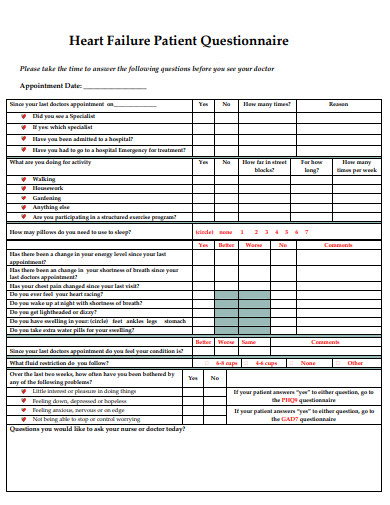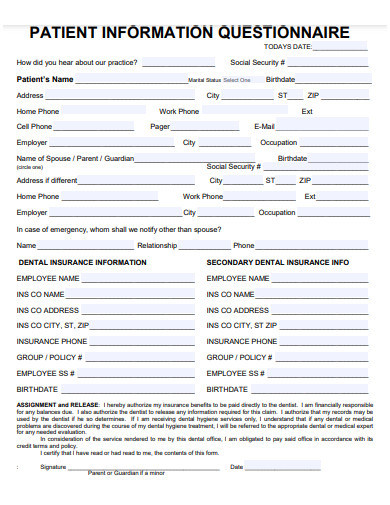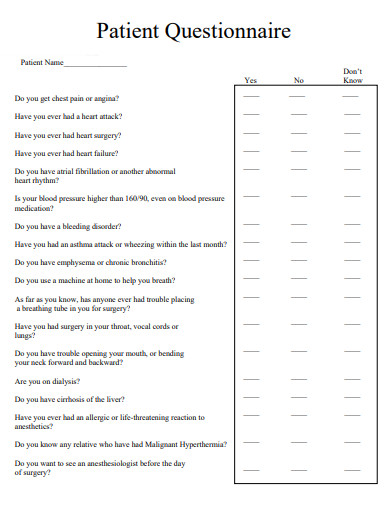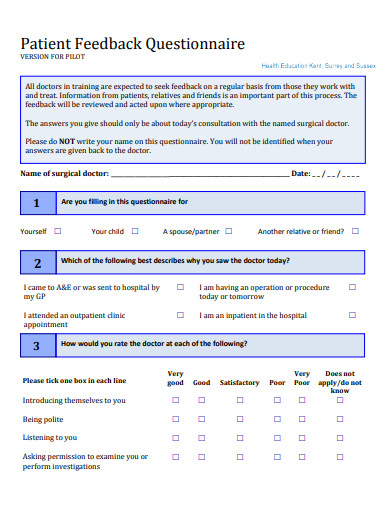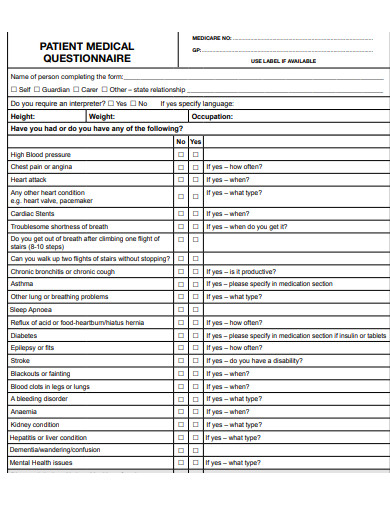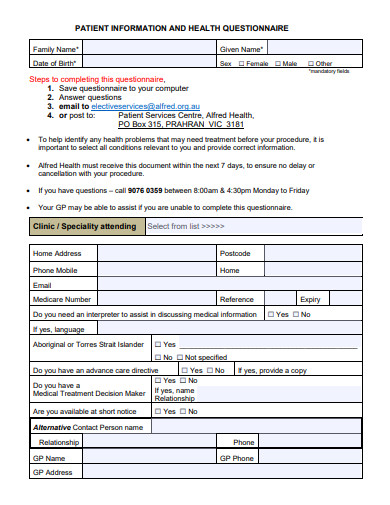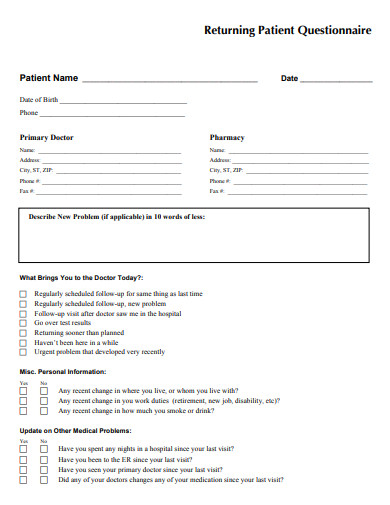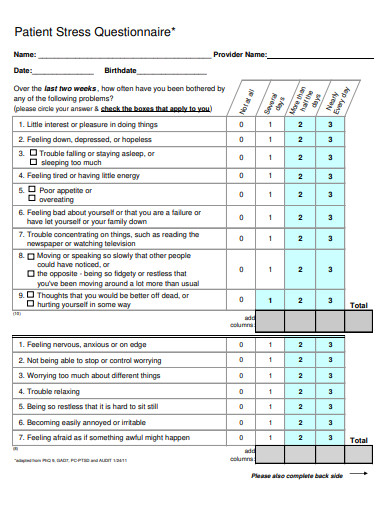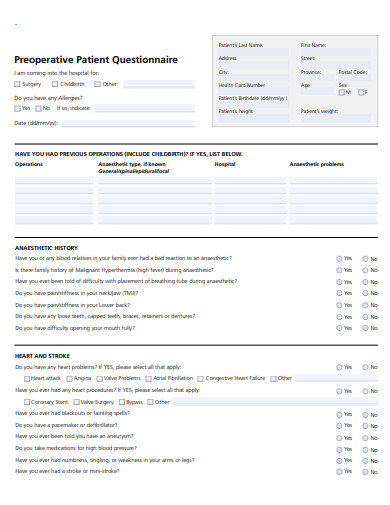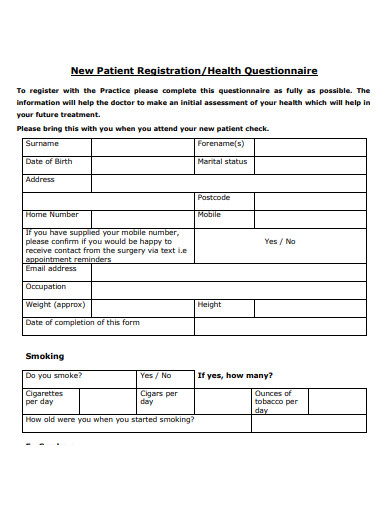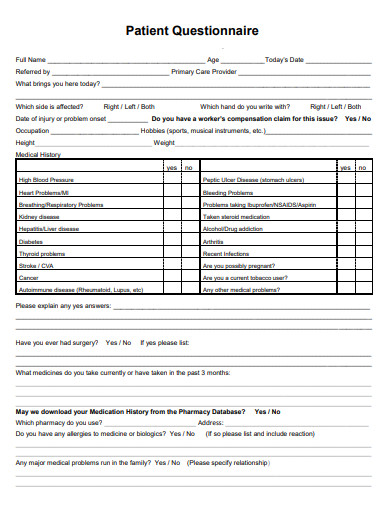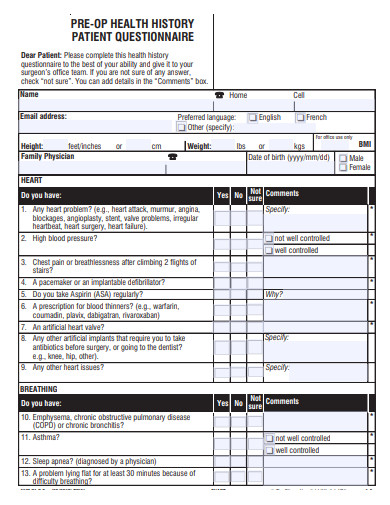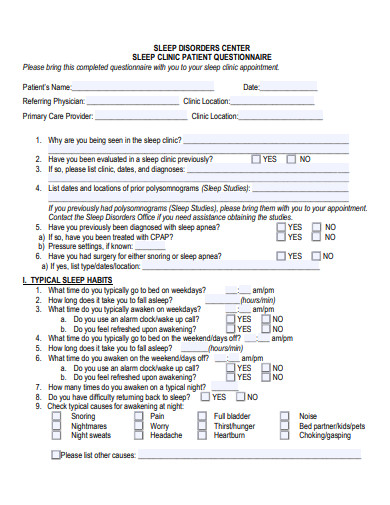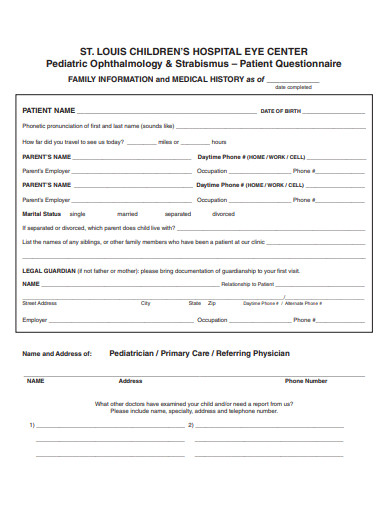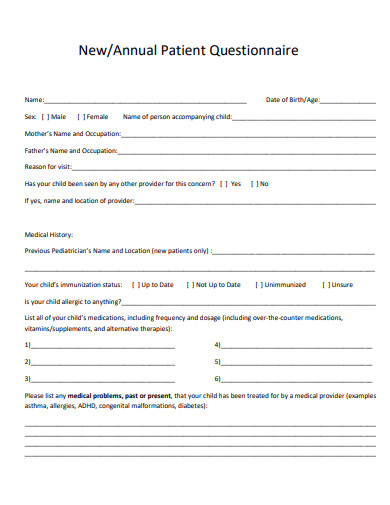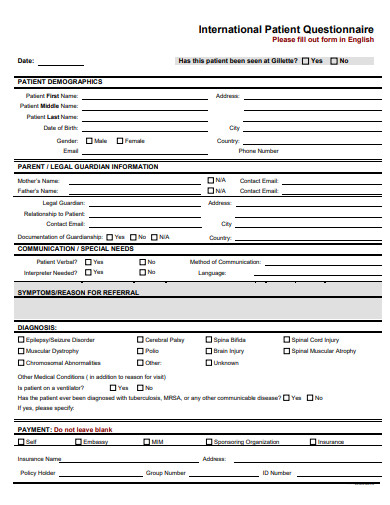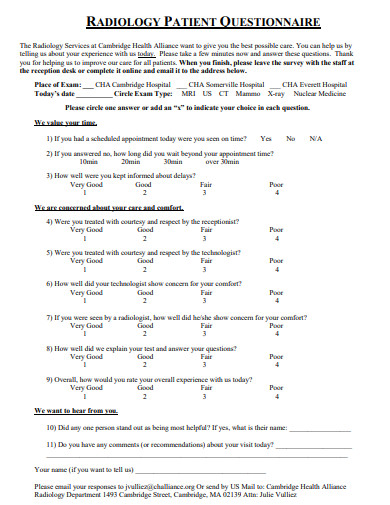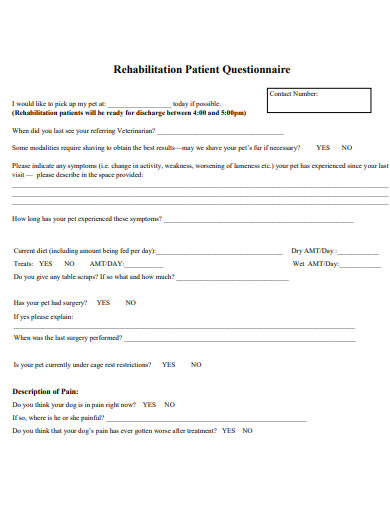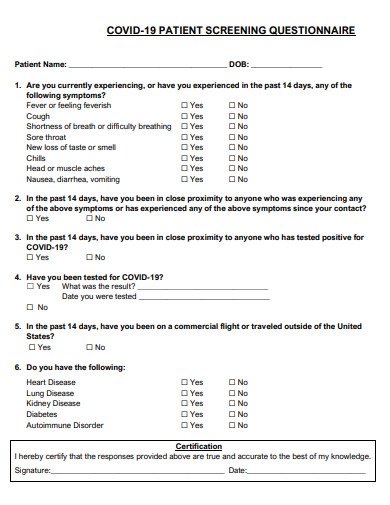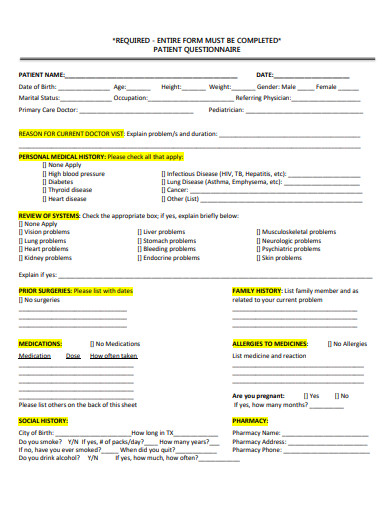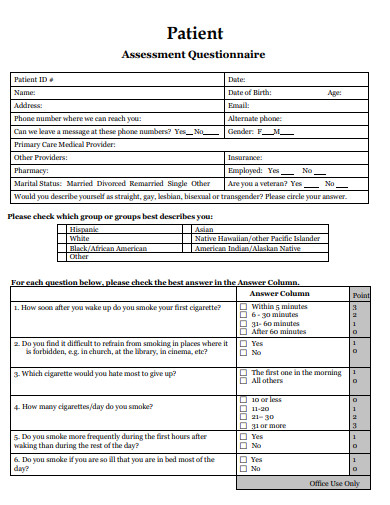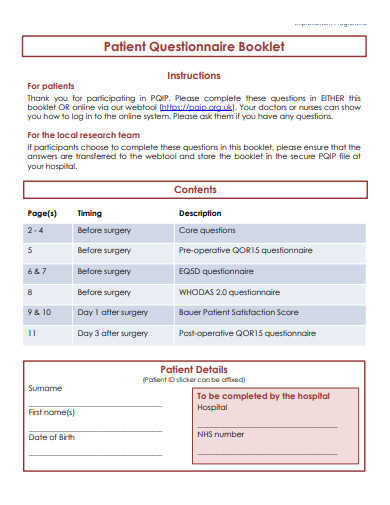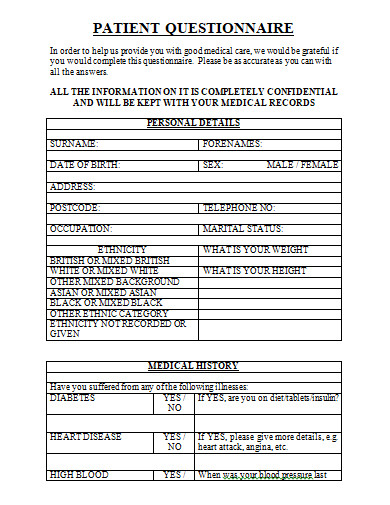Delve into our Sample Patient Questionnaire Template, meticulously crafted to capture authentic patient feedback and insights. Designed for healthcare professionals eager to enhance their services, this template integrates key questions that can illuminate patient experiences and expectations. A perfect fusion of simplicity and depth, our sample questionnaire is an indispensable tool in today’s patient-centric healthcare landscape. Harness the power of informed decision-making and stay a step ahead with our resources.
36+ Patient Questionnaire Samples
1. Patient Questionnaire Template
2. Comprehensive New Patient Questionnaire Template
3. Sample Patient Questionnaire Template
4. Adult New Patient Questionnaire Template
5. Patient Health Questionnaire Template
6. New Patient Questionnaire Template
7. Diabetes Lifecare Patient Questionnaire Template
8. Patient History Questionnaire Template
9. Patient Satisfaction Questionnaire Template
10. Basic Patient Questionnaire Template
11. New Patient Visit Questionnaire Template
12. Heart Failure Patient Questionnaire Template
What is a Patient Questionnaire?
A patient questionnaire is a structured tool used by healthcare professionals to gather specific information from patients about their health, lifestyle, medical history, symptoms, concerns, and sometimes even their opinions about the healthcare services they’ve received. This type of questionnaire is vital in the medical field, serving a plethora of purposes that range from clinical diagnosis to improving patient care services.
Purpose and Importance
Clinical Assessment: One of the most common uses of a patient questionnaire is for clinical assessment. For instance, if a patient comes in with specific symptoms, a targeted questionnaire can help the physician to narrow down potential diagnoses by collecting more detailed information about the symptoms, their duration, severity, and associated factors.
Medical History: Another frequent use is to gather a comprehensive medical history, especially for new patients. Information about past surgeries, medications, allergies, family medical history, and lifestyle habits can greatly influence the diagnosis and treatment plan.
Feedback Mechanism: Patient questionnaires are also used to gauge the satisfaction levels of patients. By collecting feedback, medical establishments can identify areas of improvement in terms of service, facilities, or patient care.
Research: In the realm of medical research, especially in epidemiology and public health, questionnaires help in collecting data from a large group of people about a specific health issue, aiding in understanding disease patterns, risk factors, and outcomes.
Design and Structure
The design of a patient questionnaire is pivotal. It has to be clear, concise, and must avoid leading questions. Typically, questionnaires utilize a mix of open-ended questions, allowing patients to express freely, and closed-ended questions for specific and quantitative data.
Some questionnaires are condition-specific. For example, the “Asthma Control Test” is used specifically for asthma patients to gauge the severity and control of their condition. Others might be more general, assessing overall physical or mental health.
Benefits
Standardization: A well-designed patient questionnaire provides a standardized format, ensuring that the same set of information is collected from every patient, which facilitates comparison and analysis.
Time-Efficiency: It can expedite the consultation process, especially if patients fill it out ahead of their appointment.
Accuracy: Patients often find it easier to recall and provide information when they have the time to think about each question. This can result in more accurate and comprehensive data.
In conclusion, patient questionnaires are invaluable tools in the healthcare sector, providing a systematic method to gather information, assess health conditions, and improve patient care. They bridge the gap between patients and healthcare providers, promoting a more informed and collaborative approach to health and wellness.
13. Patient Information Questionnaire Template
14. Formal Patient Questionnaire Template
15. Patient Feedback Questionnaire Template
16. Patient Medical Questionnaire Template
17. Printable Patient Questionnaire Template
18. Patient Information and Health Questionnaire Template
19. Returning Patient Questionnaire Template
20. Patient Stress Questionnaire Template
21. Preoperative Patient Questionnaire Template
How Do You Create a Patient Questionnaire?
Creating a patient questionnaire is a process that requires careful planning, clarity, and a focus on ensuring that patients can comfortably provide the required information. The objective is to gather accurate data while ensuring the patient’s experience is straightforward and non-intimidating. Here’s a step-by-step guide on how to create an effective patient questionnaire:
Define the Objective:
First and foremost, identify the specific purpose of the questionnaire. Are you looking to gather feedback on clinical care, understand a patient’s medical history, or evaluate their experience with facilities and services?
Understand Your Demographic:
Know the age, cultural background, and education level of your target audience. Tailoring the questionnaire to fit the specific demographic can improve the accuracy and depth of the responses.
Structure the Questionnaire:
Decide on the format:
Closed-ended questions: Ideal for quantitative data, such as yes/no responses or multiple-choice options.
Open-ended questions: Allow patients to express their feelings, experiences, and concerns in detail.
Rating scales: Useful for measuring satisfaction levels or the severity of symptoms.
Use Simple Language:
Avoid medical jargon or complex terms. The language should be clear, concise, and easy for the average person to understand.
Group Related Questions:
Organize the questionnaire in a logical manner. Grouping related questions can help patients think systematically about their responses and can make data analysis more straightforward.
Prioritize Privacy:
Patient information is sensitive. Ensure you have measures to keep their data confidential. If the questionnaire is digital, ensure it adheres to privacy regulations and is encrypted.
Pilot the Questionnaire:
Before deploying the questionnaire widely, test it on a small group of patients. Their feedback can be invaluable in identifying areas of improvement, understanding any ambiguities, or highlighting questions that might be uncomfortable.
Provide Clear Instructions:
Each section should come with clear instructions on how to complete it. This ensures uniformity in the way different patients approach the questionnaire.
Make It Accessible:
If the questionnaire is online, ensure it’s compatible with various devices. For physical copies, consider factors like font size for better readability.
Review Periodically:
Medical practices, patient expectations, and healthcare services evolve. Periodically reviewing and updating the questionnaire ensures it remains relevant and accurate.
Analyze and Implement Feedback:
Once the data is collected, analyze it to derive actionable insights. If the questionnaire’s purpose was to gather feedback, make sure to implement changes based on the findings.
Patient questionnaires are integral tools in the medical realm, bridging the gap between healthcare providers and patients. An effectively designed questionnaire provides insights that can lead to improved patient care, more informed medical decisions, and an enhanced patient experience. Therefore, it’s crucial to approach its creation with the utmost consideration for its purpose, the patient’s experience, and the value of the data it gathers.
22. New Patient Registration Health Questionnaire Template
23. Patient Questionnaire in PDF
24. Health History Patient Questionnaire Template
25. Sleep Clinic Patient Questionnaire Template
26. Patient Safety Questionnaire Template
27. Simple Patient Questionnaire Template
28. Annual Patient Questionnaire Template
29. International Patient Questionnaire Template
30. Radiology Patient Questionnaire Template
31. Pre-Registration Patient Questionnaire Template
32. Rehabilitation Patient Questionnaire Template
33. Patient Screening Questionnaire Template
34. Standard Patient Questionnaire Template
35. Patient Assessment Questionnaire Template
36. Patient Questionnaire Booklet Template
37. Patient Questionnaire in DOC
What Questions Should I Ask in a Patient Survey?
Understanding the patient experience is pivotal for any healthcare provider aiming to offer top-notch services. When crafting a patient survey, the primary goal is to solicit honest, detailed feedback about different aspects of a patient’s journey, from administrative nuances to the clinical care received.
Demographic Context
Understanding your respondents’ backgrounds helps in interpreting feedback more effectively. By asking about their age range, gender, and ethnic background, you can identify patterns and tailor services to meet diverse needs.
Initial Impressions Matter
The beginning of a patient’s journey often sets the tone for their overall experience. Find out how easy it was for them to schedule their appointment and the convenience of accessing the facility. Additionally, gaining insight into their wait time before seeing a healthcare provider can provide valuable data on operational efficiency.
Delving into the Quality of Care
It’s crucial to evaluate the patient’s direct clinical experience. Determine whether the healthcare provider was attentive to their concerns, addressed questions thoroughly, and involved them in treatment decisions. The quality of examination and clarity in diagnosis are also essential areas to probe.
Evaluating Staff Interactions
Every staff interaction contributes to a patient’s perception of care. By inquiring about their experiences with various staff members, from reception to nursing assistants, you can gauge the consistency and quality of patient-staff interactions.
Assessing the Facility
The environment in which care is provided speaks volumes. Ask about the facility’s cleanliness, maintenance, and ambiance. Additionally, get feedback on specific areas like restrooms and waiting zones to ensure they meet patient expectations.
The Pillar of Effective Communication
Clear and compassionate communication is central to a positive patient experience. Determine if medical terms were communicated accessibly, if treatment protocols were clear, and whether patients felt adequately informed about potential side effects or complications.
Measuring Overall Satisfaction
Towards the survey’s end, focus on the patient’s overall sentiment. By asking them to rate their experience or if they’d recommend the facility to friends and family, you can gauge overall satisfaction levels. It’s also beneficial to understand the highlights of their visit and areas they believe need attention.
Open Feedback – The Goldmine of Insights
Always conclude with an opportunity for patients to share unstructured comments. This open avenue often captures nuanced feedback, providing rich insights for improvement.
In sum, a patient survey is a powerful tool that, when crafted with care, offers a comprehensive view of a patient’s journey, ensuring healthcare providers continually evolve to meet and exceed patient expectations.
Related Posts
Sample Business Card Templates
Sample Cashier Job Descriptions
Questionnaire Samples
FREE 10+ Sample HR Resource Templates in PDF
FREE 10+ HR Consulting Business Plan Samples in MS Word | Google Docs | Pages | PDF
FREE 49+ Sample Job Descriptions in PDF | MS Word
FREE 16+ Nonprofit Budget Samples in PDF | MS Word | Excel | Google Docs | Google Sheets | Numbers | Pages
FREE 13+ Academic Calendar Templates in Google Docs | MS Word | Pages | PDF
FREE 10+ How to Create an Executive Summary Samples in Google Docs | MS Word | Pages | PDF
FREE 23+ Sample Event Calendar Templates in PDF | MS Word | Google Docs | Apple Pages
Company Profile Samples
FREE 10+ Leadership Report Samples [ Development, Training, Camp ]
FREE 24+ Sample Payment Schedules in PDF | MS Word
FREE 10+ Return to Work Action Plan Samples in PDF | DOC
Autobiography Samples & Templates
